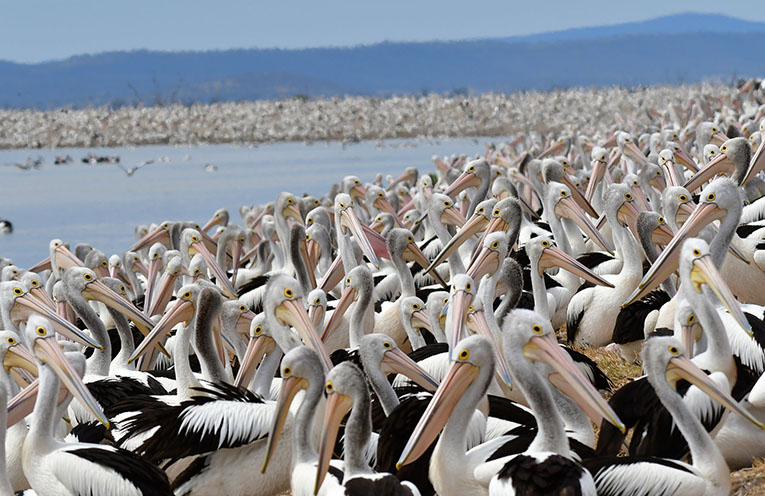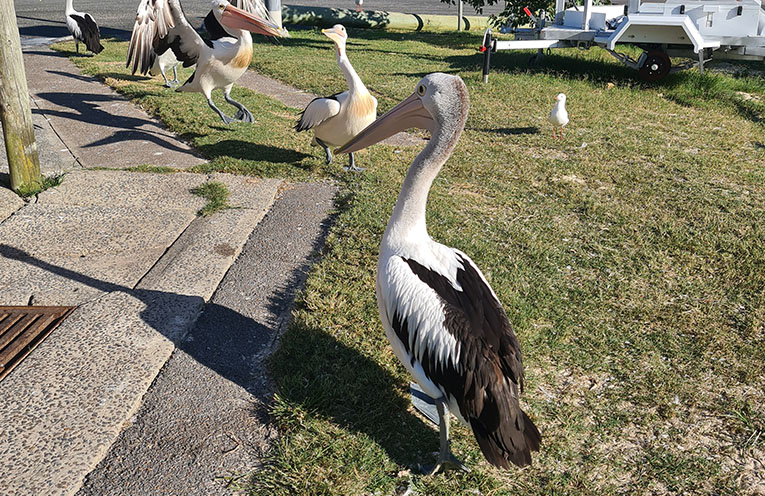
HERE in the Great Lakes Marine Park we tend to think of pelicans as coastal birds.
They soar above the waterways and across the sparkling waters of our rivers and bays.
 Advertise with News of The Area today.
Advertise with News of The Area today.It’s worth it for your business.
Message us.
Phone us – (02) 4981 8882.
Email us – media@newsofthearea.com.au
Yet these prehistoric looking birds are also inhabitants of inland lakes.
More than 25,000 pelicans will soon take flight following two large pelican breeding events in inland NSW.
Pelican nests have been counted at Lake Brewster in the Lachlan Valley and Kieeta Lake in the Murrumbidgee Valley, with the water birds having only been recorded nesting in Kieeta Lake once before, after the 2016 floods.
Minister for Environment James Griffin said the mega breeding event coincided with a wet year, dozens of full lakes and abundant fish stocks, creating excellent conditions for the season.
“These breeding events are incredibly important to help build up water bird populations, which have been affected by recent droughts,” Mr Griffin said.
“We are working with the Commonwealth Environmental Water Holder to keep water levels stable and give the pelicans the best chance for breeding success.
“We’re also seeing Pelicans flock to Kieeta Lake, thanks to a four year NSW Government project to turn irrigated farmland back to a more natural state, allowing water to reach the wetlands.”
The Nari Nari Tribal Council, Kieeta Lake’s Indigenous owners, have been a key part of the success of the breeding season because of important environmental water and feral pest management.
Pelicans at both sites are part of a leg-banding research project by the NSW Department of Planning and Environment (DPE) and University of New South Wales, which is tracking how far the birds travel and if they return to breed at the site.
“This research provides important information that helps us understand the migration patterns and behaviors of these iconic birds.
“For example in the past, the banded birds have been spotted in northern NSW and southern Queensland,” Mr Griffin said.
While out and about it will be of assistance to the research if Port Stephens and Myall Lakes locals report any banded pelicans which they sight.
Banded pelican sightings can be reported via peli.bands@environment.nsw.gov.au.
One study suggests that Australian pelican populations have declined across south-eastern Australia.
The study found that Australian pelicans move distances of up to 3206km, and travel across the species’ entire geographic range, within a year of fledging.
By Marian SAMPSON
